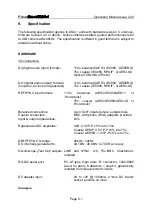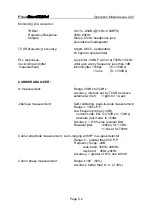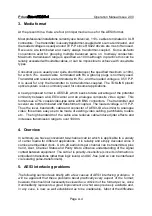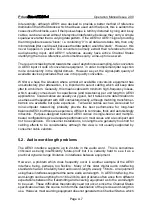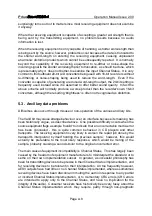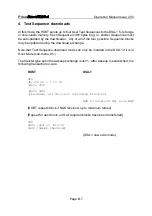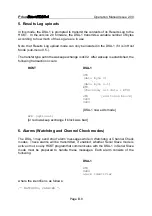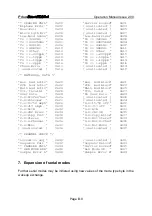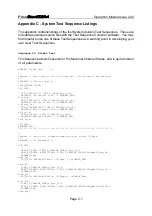
Prism
Operation Manual Issue 2.00
Page A.7
Interestingly, although AES11 was devised to provide a better method of reference
distribution than Wordclocks which had been used until that point, this is seldom the
case since Wordclocks, even if their pulse-shape is terribly distorted by long and lossy
cables, can be received without intersymbol interference because they carry a simple
square-wave rather than a varying data pattern. If the AES3 or AES11 signal providing
the timing reference were 'black', i.e. containing '0' in all data and status bits, then only
minimal data jitter could result because the data pattern would be 'static'. However, this
never happens in practice: D/A converters normally extract their reference from the
audio-bearing input, and AES11 references usually have active Channel Status
identifying them as a reference, and sometimes carry a line-up tone as well.
There is an increasing trend towards the use of asynchronous sampling-rate converters
in AES3 input circuits of conversion equipment, in order to implement jitter rejection
more conveniently in the digital domain. However as yet, the signal-path quality of
available devices precludes their use in top quality converters.
Whilst we have the situation where almost all available conversion equipment has
unsatisfactory jitter attenuation, it is important to select cabling which will keep data
jitter to a minimum. Generally, this means cable with minimum high-frequency losses,
which usually comes down to capacitance (and resistance) per unit length in AES3
applications. Coaxial cables are usually very good, but it takes some determination to
use these with equipment with XLR connectors directly, although matching transformer-
barrels are available but quite expensive. Twin-axial cables such as were used for
mini-computer networking probably provide the best performance for long-haul
balanced AES3, but these are expensive, difficult to terminate, thick and astonishingly
inflexible. Purpose-designed balanced AES3 cables in single-bearer and multiple-
bearer configurations give adequate performance in most cases and are compact and
not too expensive. In consumer installations, run lengths are generally too short for
cabling effects to be considerable, although this view is not usually supported by
consumer cable vendors.
5.2. Audio word-length problems
The AES3 interface supports up to 24-bits in the audio word. This is sometimes
criticised as being insufficiently 'future-proof' but it is certainly hard to see it as a
practical dynamic range limitation in interfaces between equipment.
However, a problem which does frequently occur is another example of the AES3
interface being, perhaps, too flexible: Many of the older digital audio interfacing
standards had an inherently fixed audio word-length, usually 16 bits - all equipment
using these interfaces supported the same audio word-length. In AES3 interfacing, the
word-length can be anything from 16 to 24 bits, and problems often arise from different
expectations between the transmitting and receiving equipment as to the word-length
to be used. These difficulties theoretically need not occur, since the Channel Status
specification allows the source to inform the destination of the precise word-length in
use. However, most sourcing equipment does not generate this Channel Status, which




